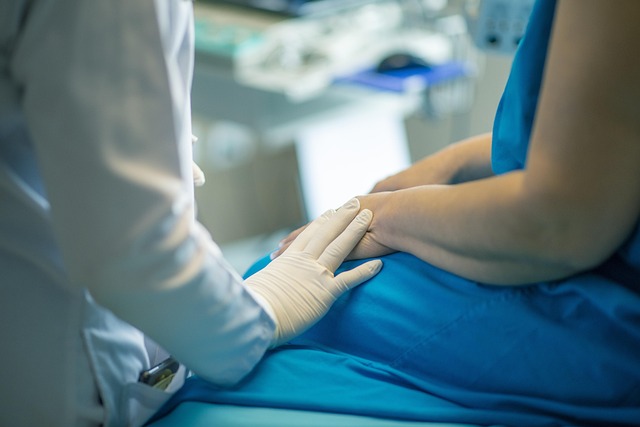Discover the Future of Dental Implants: Screwless Solutions in Australia
The dental implant industry in Australia is undergoing a revolutionary transformation with the introduction of screwless dental implants. These advanced systems offer patients a more comfortable and efficient alternative to traditional screw-retained implants. By eliminating many complications associated with conventional designs, screwless implants provide the same long-lasting, functional, and aesthetic results while simplifying the treatment process.

The landscape of dental restoration continues to evolve with groundbreaking technologies that prioritise patient comfort and treatment efficiency. Screwless dental implants represent a significant advancement in implantology, providing Australian patients with innovative solutions that address many concerns associated with traditional implant procedures.
What Are Screwless Dental Implants?
Screwless dental implants utilise advanced attachment mechanisms that eliminate the need for traditional screws to secure prosthetic teeth to the implant fixture. These systems employ innovative locking mechanisms, such as friction-fit connections, bayonet-style attachments, or specialised retention systems that create secure bonds between the implant and restoration. The technology focuses on creating stable connections while simplifying both the surgical procedure and ongoing maintenance requirements.
These implants maintain the same titanium construction as conventional implants, ensuring proper osseointegration with the jawbone. The key difference lies in the connection method between the implant fixture and the prosthetic crown, bridge, or denture.
How Does the Screwless Implant Procedure Work?
The screwless implant procedure follows a streamlined approach that often reduces treatment time and complexity. Initial consultation involves comprehensive dental imaging and treatment planning, similar to traditional implant procedures. During the surgical phase, the titanium implant fixture is placed into the jawbone using precise techniques.
Once osseointegration occurs, typically within three to six months, the prosthetic restoration is attached using the screwless mechanism. This process often requires fewer appointments and can be completed more efficiently than traditional screw-retained restorations. The absence of screws means no access holes are needed in the prosthetic teeth, allowing for better aesthetics and easier cleaning.
What Are the Benefits of Screwless Implant Technology?
Screwless implant systems offer several advantages over conventional approaches. The elimination of access holes in prosthetic teeth creates superior aesthetics, particularly important for front teeth restorations. Patients often experience easier maintenance routines since there are no screw holes to clean or potential screw loosening issues to monitor.
The streamlined attachment process can reduce chair time during appointments and may result in fewer follow-up visits. Additionally, the absence of screws eliminates the risk of screw fracture or loosening, which can occur with traditional implant systems over time. Many patients report improved comfort during the restoration process due to the simplified procedures.
Who Is a Good Candidate for Screwless Implants?
Ideal candidates for screwless dental implants share similar characteristics with those suitable for traditional implants. Adequate bone density and volume in the jaw are essential for successful implant placement. Patients should maintain good oral hygiene habits and have realistic expectations about treatment outcomes.
Certain clinical situations may particularly benefit from screwless technology, including cases where aesthetics are paramount, such as front tooth replacements. Patients who have experienced complications with traditional screw-retained implants may also find screwless alternatives beneficial. However, individual assessment by qualified dental professionals is crucial to determine suitability.
How Much Do Screwless Dental Implants Cost in Australia?
The cost of screwless dental implants in Australia varies significantly based on multiple factors including location, practitioner experience, and case complexity. Understanding the financial investment involved helps patients make informed treatment decisions.
| Provider Type | Treatment Scope | Cost Estimation (AUD) |
|---|---|---|
| Private Practice | Single Implant | $4,000 - $7,000 |
| Specialist Clinic | Single Implant | $5,000 - $8,500 |
| University Clinic | Single Implant | $3,500 - $5,500 |
| Private Practice | Full Mouth Restoration | $25,000 - $45,000 |
| Specialist Clinic | Full Mouth Restoration | $30,000 - $55,000 |
Prices, rates, or cost estimates mentioned in this article are based on the latest available information but may change over time. Independent research is advised before making financial decisions.
Factors influencing cost include the need for additional procedures such as bone grafting, the type of prosthetic restoration required, and geographical location within Australia. Major cities typically have higher fees compared to regional areas. Many practices offer payment plans or financing options to help manage treatment costs.
Screwless dental implant technology represents an exciting advancement in restorative dentistry, offering Australian patients enhanced comfort, aesthetics, and convenience. While costs may be comparable to or slightly higher than traditional implants, the benefits of improved aesthetics, simplified maintenance, and reduced complications make this technology an attractive option for many patients. Consulting with experienced dental professionals ensures proper evaluation and treatment planning tailored to individual needs and circumstances.




